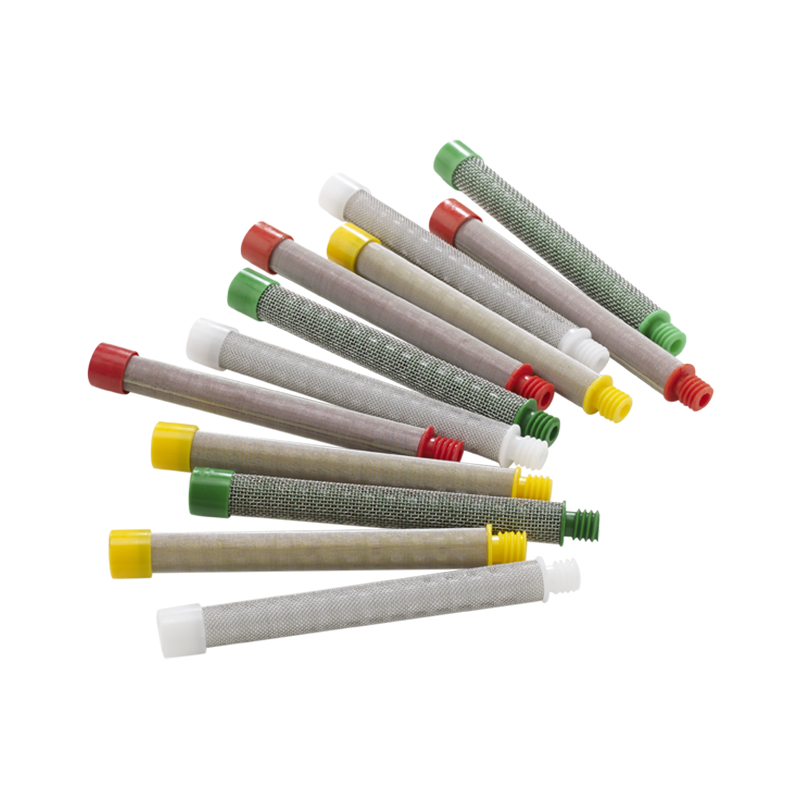What is the purpose of airless spray gun filters?
Spraying technology has evolved over the years, transforming the way we apply coatings to surfaces. Among the myriad innovations, airless spray guns have emerged as a game-changer in the painting and coating industry. However, hidden within the intricate machinery of these guns lies a small yet crucial component – the airless spray gun filter. In this article, we will delve into the purpose and significance of these filters, unraveling the mysteries behind their role in achieving flawless finishes.
Before we dive into the realm of airless spray gun filters, it's essential to comprehend the fundamentals of airless spray technology. Unlike traditional spray methods that rely on compressed air to atomize and propel the coating material, airless spray systems utilize a high-pressure pump to force the paint or coating through a small nozzle. This results in a fine mist or spray, allowing for efficient and even coverage on surfaces of various textures and sizes.
The Anatomy of an Airless Spray Gun
At the heart of an airless spray gun is a complex system designed for precision and efficiency. The gun typically consists of a pump, hose, and a nozzle. The pump pressurizes the coating material, and the nozzle releases it in a controlled spray pattern. While this basic structure enables the effective application of coatings, the devil is in the details, and this is where the airless spray gun filter comes into play.
The Role of Airless Spray Gun Filters
Airless spray gun filters are small, mesh-like components strategically placed within the gun to filter out impurities and particles from the coating material. These filters act as guardians, ensuring that only clean and debris-free material reaches the nozzle for atomization. Their primary purpose is to prevent clogs and blockages that can compromise the quality of the spray pattern and, consequently, the finish.
Protecting the Nozzle: A Critical Task
One of the primary functions of airless spray gun filters is to safeguard the integrity of the nozzle. The nozzle is a delicate component responsible for shaping the spray pattern and determining the size of the particles being expelled. Any obstruction in the nozzle can lead to uneven spray patterns, sputtering, or even complete blockage, disrupting the application process.
By capturing contaminants before they reach the nozzle, the airless spray gun filter extends the life of this critical component, minimizing downtime and maintenance costs. This protection ensures that the spray gun operates smoothly, delivering consistent and professional results with each use.
Enhancing Finish Quality
Achieving a flawless finish is the ultimate goal in any coating application. Airless spray gun filters play a pivotal role in this regard by preventing particles, such as dust, dirt, or dried paint, from marring the surface. The absence of these impurities ensures that the coating material is applied uniformly, resulting in a smooth and professional finish.
Moreover, by maintaining a clean spray pattern, airless spray gun filters contribute to the overall efficiency of the application process. This efficiency is not only a time-saver but also a cost-effective measure, as it reduces the need for rework and touch-ups.
Choosing the Right Filter for the Job
Not all coatings are created equal, and neither are airless spray gun filters. The choice of filter depends on the type of coating material being used. High Quality Filters come in various mesh sizes, each designed to accommodate specific particles and viscosity levels. Selecting the appropriate filter ensures optimal performance and longevity of both the filter and the entire airless spray system.
Conclusion: A Small Component with a Big Impact
In the realm of airless spray technology, the humble airless spray gun filter may seem like a minor player. However, its role in ensuring a smooth, efficient, and high-quality coating application cannot be overstated. By filtering out impurities and protecting critical components like the nozzle, these filters contribute significantly to the success of painting and coating projects, making them an indispensable element in the arsenal of any professional painter or contractor.
- Previous: What is the electric actuator?
- Next: How to install Flexible Metal Conduit



